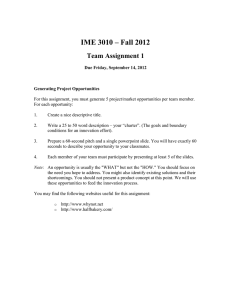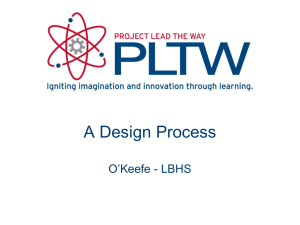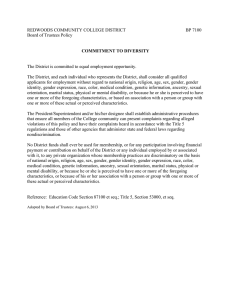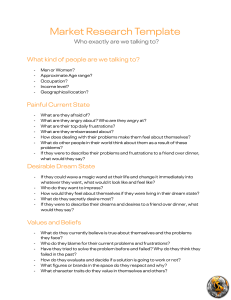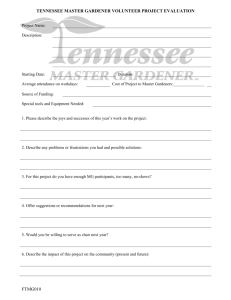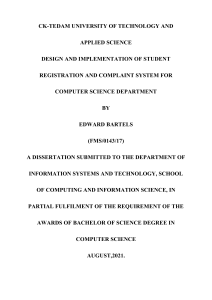IME 3010 – Fall 2012 Team Assignment 2
advertisement
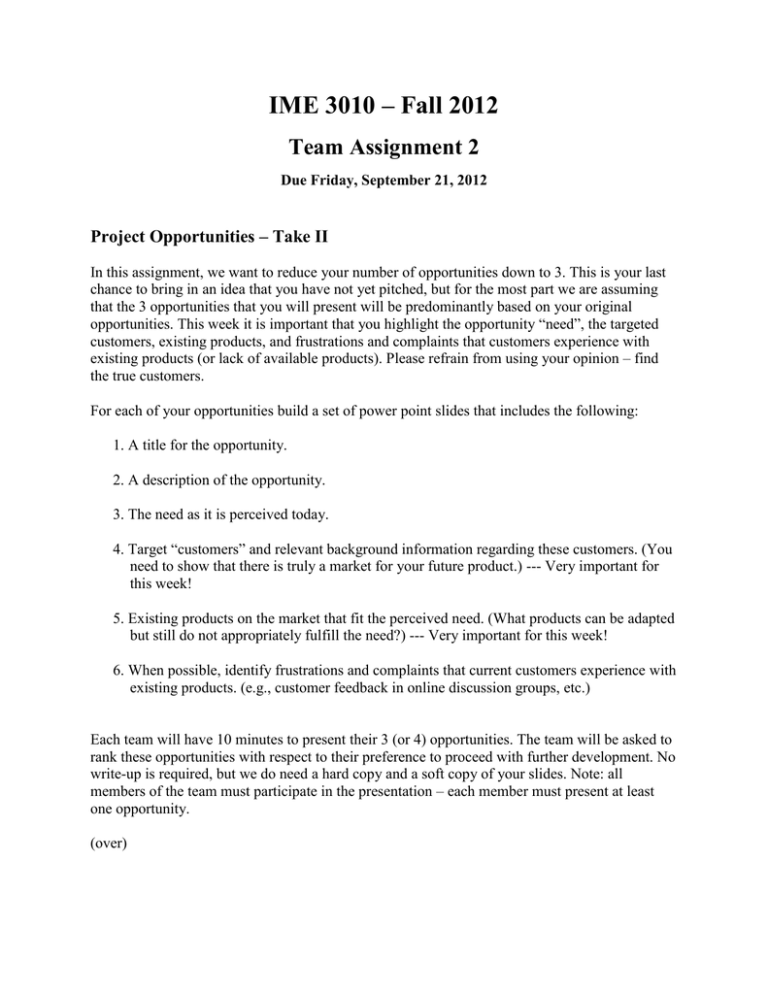
IME 3010 – Fall 2012 Team Assignment 2 Due Friday, September 21, 2012 Project Opportunities – Take II In this assignment, we want to reduce your number of opportunities down to 3. This is your last chance to bring in an idea that you have not yet pitched, but for the most part we are assuming that the 3 opportunities that you will present will be predominantly based on your original opportunities. This week it is important that you highlight the opportunity “need”, the targeted customers, existing products, and frustrations and complaints that customers experience with existing products (or lack of available products). Please refrain from using your opinion – find the true customers. For each of your opportunities build a set of power point slides that includes the following: 1. A title for the opportunity. 2. A description of the opportunity. 3. The need as it is perceived today. 4. Target “customers” and relevant background information regarding these customers. (You need to show that there is truly a market for your future product.) --- Very important for this week! 5. Existing products on the market that fit the perceived need. (What products can be adapted but still do not appropriately fulfill the need?) --- Very important for this week! 6. When possible, identify frustrations and complaints that current customers experience with existing products. (e.g., customer feedback in online discussion groups, etc.) Each team will have 10 minutes to present their 3 (or 4) opportunities. The team will be asked to rank these opportunities with respect to their preference to proceed with further development. No write-up is required, but we do need a hard copy and a soft copy of your slides. Note: all members of the team must participate in the presentation – each member must present at least one opportunity. (over) Again keep the following in mind: • The product should be a material good and not a service. Although many of the ideas in the course apply to services (e.g., customer needs and product architecture), many do not (e.g., design for assembly). • The product should have a high likelihood of containing fewer than 10 parts. Although you cannot anticipate the design details, it is easy to anticipate that an electric drill will have more than 10 parts and that a garlic press will probably have fewer than 10. • You should be confident of being able to prototype the product for less than $100 - $200. For example, a new Gillette razor may have about 10 parts, but would require tens of thousands of dollars to prepare a geometrically accurate prototype. • The product should require no basic technological breakthroughs. (Yes, a more compact airbag would be a nice, but can you do it without inventing a new chemical?) We do not have time to deal with large technological uncertainties.
